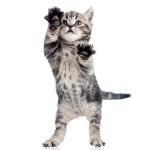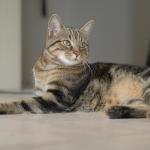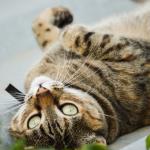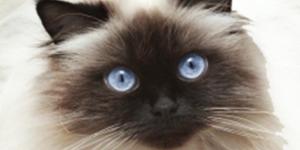European Shorthair
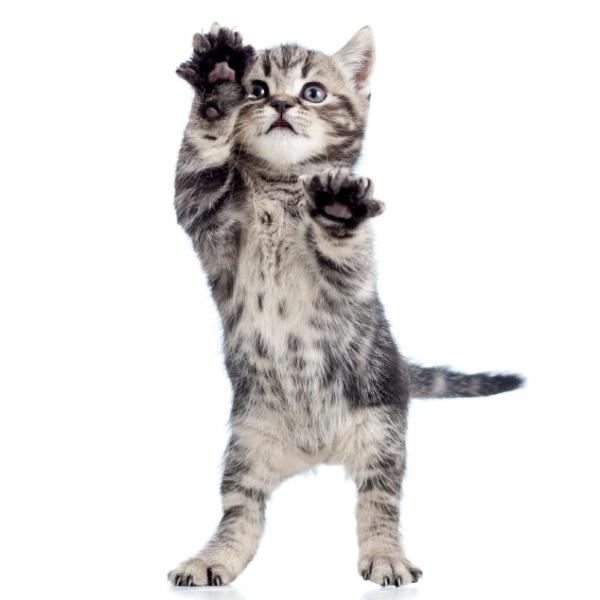
The common European cat is also known as the "Roman cat" since it was at this time when they spread throughout Europe. Their Latin name is Felis Catus. It is believed that this breed comes from the African wild cat and the jungle cat although their origins are very uncertain. Other sources say they come from Sweden. Of course, it was not until 1981 that the race was officially accepted by the FIFE.
European cats tend to be bicolored, with a short-haired tabby mantle but may also carry long haired, hawkish or marbled genes. Discover everything you need to know about the European cat in this AnimalWised breedfile and do not forget to visit our website for info on food, care or other important facts.
- Africa
- Asia
- Europe
- Sweden
- Category III
- 7-11
- 11-13
- 13-17
- 17-22
- 22-30
- 8-10
- 10-15
- 15-18
- 18-20
Physical characteristics of the European cat
European cats are usually of medium size although it is common for males to be somewhat larger and more muscular than females. Either way, they are a strong and robust race. The common European cat has a wide and rounded face as well as a thick tail at the base and sharpened tip. Their coat is soft and shiny.
They can have eyes of different color including blue, yellow or green. They can also possess different types of fur:
- Tabby: The most common and well-known. This is dark stripes on a brownish coat.
- One color: Although the most common are white and black, they can also develop gray tones. They may also have some facial masks.
- Marbled: Marbled is a variety of the unusual brindle. We can identify a European marbled cat if they have a thick dark line that follows the entire spine as well as other stripes on the sides: they are thick and well defined. Marbled cats may also show small orange shapes.
- Bicolor: Usually they are a mix of white and black but they can also occur in orange and white tones. There is a large variety of European bicolor cats.
- Tricolor: Usually occur in females and usually orange mixed with white and black.
Finally, we add that the length of their coat may vary although usually they are shorthaired.
Temperament
Although each cat has their own particular character, the European cat is usually somewhat independent. However, when they are at home, they will be a very affectionate and sweet animal and frequently seek your attention. They are very intelligent and clean cats, with strong hunting skills that you will quickly see if you decide to adopt one.
They adapt easily to all types of homes and are very sturdy cats. You will enjoy a very sweet animal but with a character that will make you realize the benefits of having a cat. However, this race can be somewhat timid with strangers at first.
Caring for a European cat
This breed does not require excessive care to keep them in tip top condition, since, as we have indicated, they are particularly clean specimens. You should brush them once a week using a brush for short-haired cats. Also, if your feline is long-haired, do not hesitate to visit our article on long-haired cat brushes.
Providing a good diet is the best way to take care of them, as this will directly affect the shine of their coat and enviable physical health. You must control their diet properly, inform yourself on the amounts of food they need according to their weight and age to avoid them becoming overweight.
Physical and mental stimulation will also be a good tool that allows you to enjoy a healthy and well developed cat. Get into intelligence games and encourage your pet to chase you around the house for regular exercise.
Finally, remember they require the basic care of any other cat and fit beautifully into any situation, climate or home. Get them a comfy bed, toys and good food and you'll enjoy a healthy and happy cat for many years.
Health of the European cat
The European cat can reach up to 15 years of age, although they have been known to live for longer if well looked after. Discover beneficial cat foods so you can make healthy homemade recipes.
The most common diseases of this breed are usually:
- Allergy
- Bronchopneumonia
- Cataracts
- Conjunctivitis
- Gripe
- Otitis
- Gastrointestinal Problems
- Hair Balls
Something to keep in mind is that they are very fertile because they develop their sexuality much earlier than other breeds of cat: at 19 months. To avoid an unwanted litter, we recommend that you castrate your feline and avoid possible behavior problems (territoriality, aggression or escaping from home).
Find out about hair balls in cats in order to treat them properly and prevent your cat from suffering gastrointestinal problems related to this problem.
European Shorthair photos
